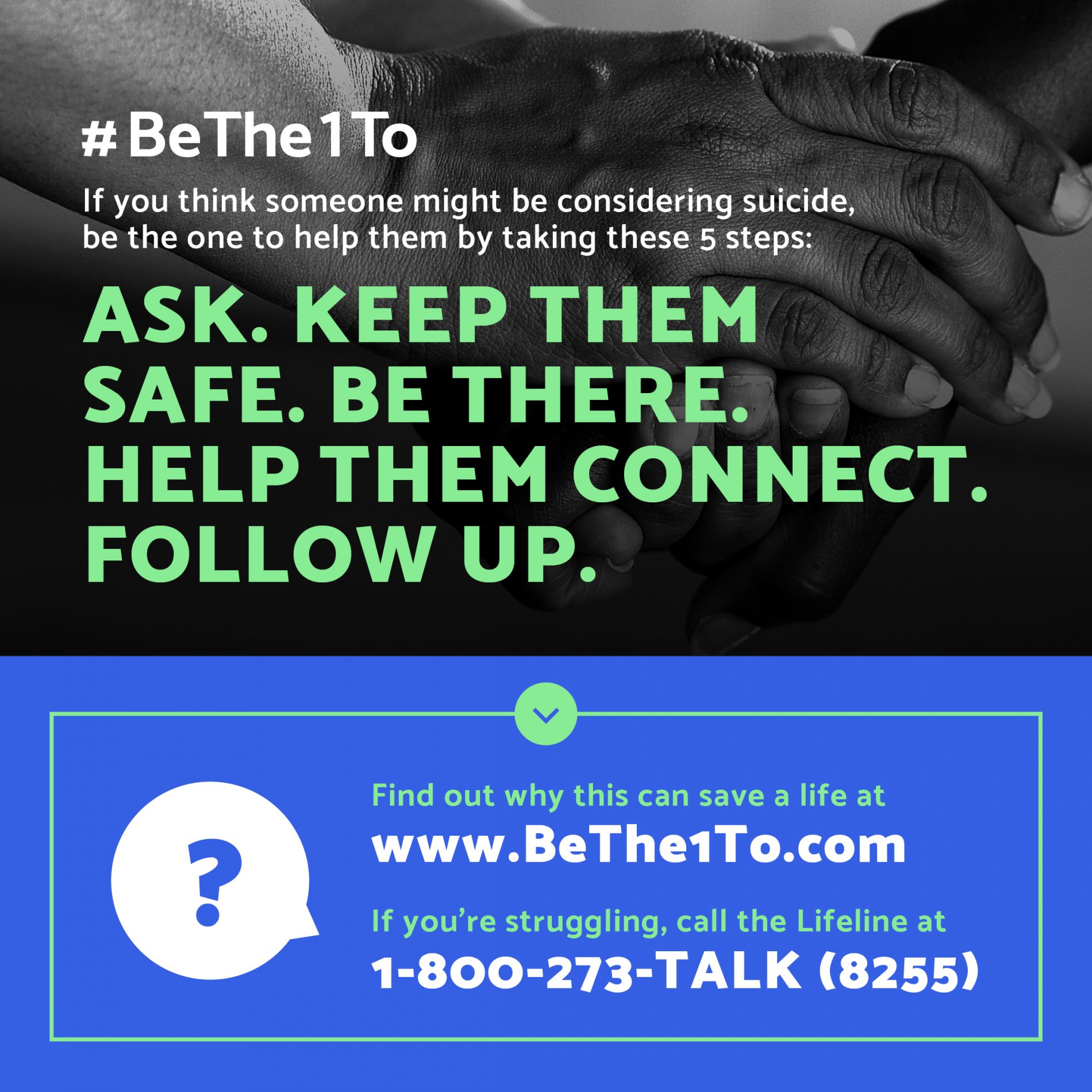Being suicidal is not a blip. The contributors to the podcast I listened to shared, suicidal thoughts are a constant in the back of their minds.
I found a podcast episode on the topic of suicide. It is a raw, truthful episode of people who have been suicidal, sharing their stories of what it is like to live with this state of mind, and what has helped them to keep living. They shared, being suicidal is not a blip. They always have these thoughts in the back of their mind. They were just fortunate to find a will to live, to get through that moment of action, to stay alive.
I listened to the podcast because I wanted to walk in my son's shoes to understand what he was experiencing and feeling because of his illness.
So, how do some make it through that moment? I became aware of mental illness symptoms and what makes someone suicidal after my son died. Unfortunately, it is too late for me to help my son. I have tremendous guilt associated with not knowing his mental state. I was not there to help him through it. Yet, I want to walk in his shoes to understand what he was experiencing and feeling with his illness. None us knew he was suicidal. He consoled others who were struggling through life, but he never shared his state of mind.
As hard as it is to listen to, I felt more connected to my son and perhaps he knows I understand a little more and I do not judge him.
That is why I sought this podcast out. With my computer I hid in the back room, cleaning, away from my husband. I already exposed his once to a live version of an episode from the podcast. Once was enough for him. He tries to make everything better, and listening would not change the outcome.
As I am listening, tears streamed down my face and sunk to the floor. I could not stop listening though, because I wanted to know what it was like for him and why he kept this secret from all of us. I wondered if he knew he was suicidal or was it heightened by the use drugs.
I took what I heard and related it back to conversations and events my husband and I had with our son. I continually replayed his life and drew connections. As hard as it is to listen to, I felt more connected to my son and perhaps he knows I understand a little more and I do not judge him.
He is Not Alone - My son's life is more than his death. It is just how he died. But many are dying, and diagnosis of a mental health condition is not a prerequisite.
You see, my son’s life is more than his death. It is just how he died. But many are dying, and diagnosis of a mental health condition is not a prerequisite.
The air date of the podcast episode was September 2018 shortly after the CDC released the latest statistics on suicide rates in the US. The rates increased in every state but one, ranging between 6% and 58%. Twenty-five states had suicide rates increase of over 30% between 1999 and 2016. According to the CDC, it is a large and growing health problem. It is the 10th leading cause of death in the US and the second leading cause of death for people 10 to 34 years of age.
You Can #BeThe1To Save a Life - Prevent suicide from happening by walking in the shoes of someone who may be like you and learn there is hope. Learn how you can help someone struggling.
This is why I encourage you to listen to this podcast, “Terrible Thanks for Asking,” episode 49, “What do you Say about Suicide.”
- You may be with someone who is struggling and you will learn how to save a life.
- You may be struggling yourself. By listening, you will know you are not alone, and there is potential for getting better.
They reference BeThe1to.com, five steps to help someone through a crisis. In case you do not listen to the podcast, I am sharing the hosts and contributors’ thoughts that resonated with me about each step. The contributors’ emotional stories leave you to tears but give you hope. It will require strength to make it better for yourself and for others.
If you are a male, you really need to listen or continue reading. Something is not in your favor resulting in higher death rates.
After reflecting on the stories as I lay awake at 3:00 am (a common nightly event these days), I noticed all of the contributors to the podcast episode are women except one male. Why do males not confide intimate things about themselves? This is a problem. According to the CDC, more males die from suicide; without a known mental health condition, 84% were males, with a mental health condition 69%, were males.
If you are a male, you really need to listen or continue reading this post.
BeThe1To and this podcast have structured stories of hope and recovery summarized into 5 helpful steps to get through a crisis, to live another day, to live a mental well life.
The 5 step information comes from BeThe1To resource kit.
Ask the Tough Question
When somebody you know is in emotional pain, ask them directly: “Are you thinking about killing yourself?”
Just ask; bring it up; talk about it up. Mentioning suicide is not a trigger but opens up the door for a conversation without judgment. Listen and try to understand. Tell them, “There is no shame asking for help.” Create a shame-free space. Accept them as they are and where they are.

Keep Them Safe
Is your friend or loved one thinking about suicide?
Ask if they’ve thought about how they would do it and separate them from anything they could use to hurt themselves.
Do they have an action? Put distance between the plan and the actions. Check in on them at the right time. For those who did succeed, the sick part got lucky and got what it wanted.

Be There for Them
Be the person willing to sit with them and not run from their pain. The stakes are high to be there to help a person who is struggling with their mental health.
Really be there for them, and listen. You do not need to solve it. Do not give your friend or loved one a to-do list to get over it. Tell them that you care. You can get past this.
Tell them, It does not define you, “You are more significant than this. You are so much more than how you are feeling right now. The pain is not permanent. This is not stronger than you are.”

Help Them Connect
Find the support that creates a safety net. De-stigmatize the getting better journey. Be with people who will talk you into living. Connect them with those who can help to live a mentally healthy life.
Help your loved one or friend connect to a support system, whether it’s 800-273- TALK(8255), family, friends, clergy, coaches, co-workers or therapists, so they have a network to reach out to for help.

Follow Up
Check in with the person you care about regularly.
Making contact with a friend in the days and weeks after a crisis can make a difference in keeping them alive.
Suicide thoughts are not just a one-time. It is not a thing that you get over. Let them know it is okay to be vulnerable and that they can be sad. Just be present. Give them a reason not to die to get through the moment when they are ready to take action.
Talk About It
After listening, you may be moved and perhaps drained. But talking about it does help come to grips that mental health struggles are real to us. It may help you digest what people are going through and how to survive.
My therapist also shared another useful resource, the National Alliance on Mental Illness (NAMI). They provide a wealth of easy reading resource guides on mental illness, ways you can get involved, where to get help, and how to live mentally healthy.
References
“How The 5 Steps Can Help Someone Who Is Suicidal.” #BeThe1To, <www.bethe1to.com/bethe1to-steps-evidence/>.
Mcinery, Nora. “Terrible, Thanks for Asking®.” APM Podcasts, Infinite Guest, 2 Apr. 2019, <www.apmpodcasts.org/ttfa/>.
NAMI – <https://www.nami.org/#>
“Preventing Suicide |Violence Prevention|Injury Center|CDC.” Centers for Disease Control and Prevention, Centers for Disease Control and Prevention, 29 Sept. 2018, <www.cdc.gov/violenceprevention/suicide/fastfact.html>.
“Suicide Rates Rising across the U.S. | CDC Online Newsroom | CDC.” Centers for Disease Control and Prevention, Centers for Disease Control and Prevention, 7 June 2018, <www.cdc.gov/media/releases/2018/p0607-suicide-prevention.html>.



